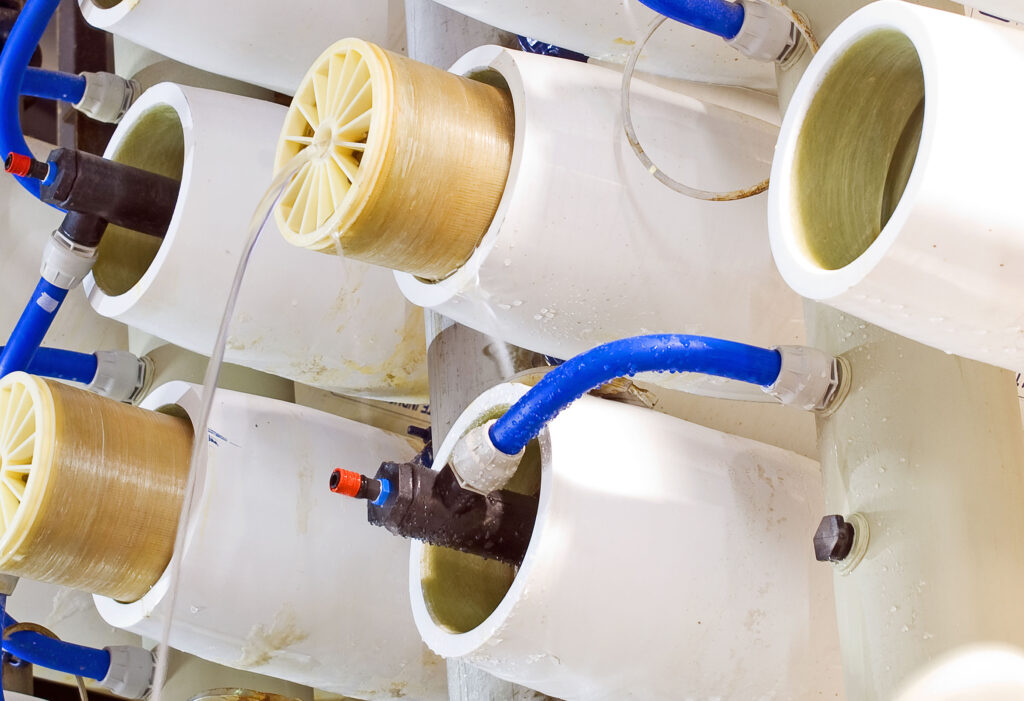Reverse osmosis membrane:
It is a semi-permeable membrane, made up of a layer called «support» of about 50 µm thickness, often in polysulfone, and a layer called “barrier” of about 0.2 µm thickness, often in polyamide.
It allows water to pass through and retains salts by applying a pressure higher than the osmotic pressure on the solution to be filtered and is used in water treatment, both for desalination and to eliminate traces of phosphates, calcium and heavy metals, pesticides and any other polluting substance.
The spiral nanofiltration membrane:
It has a semi-permeable layer usually made of polyamide with a porosity of about 0.001 micron. Under the effect of a pressure gradient, the nanofiltration membrane removes the majority of organic molecules, almost all viruses, the majority of natural organic matter and a variety of salts. It also removes the divalent ions that make water hard and is used for water softening, for the removal of heavy metals from wastewater, for wastewater depollution, as a pre-treatment before reverse osmosis, for nitrate removal, for color removal, etc.
Ultrafiltration membrane:
It is composed of several hollow fibers and the diameter of the pores is about 0.01 micron. It allows salts to pass freely and rejects only the largest solutes (macromolecules) and particulate elements such as viruses, bacteria, colloids, etc…

